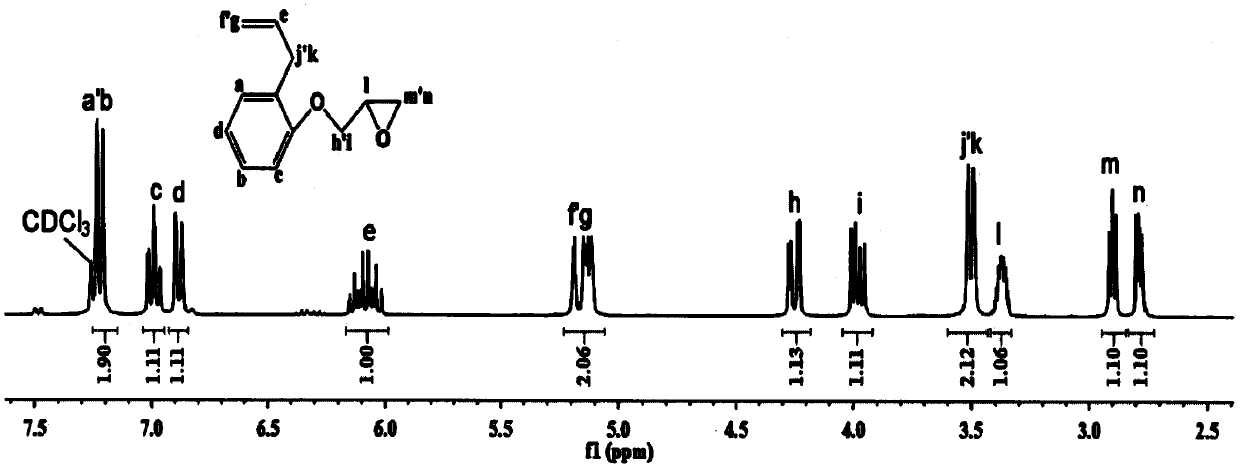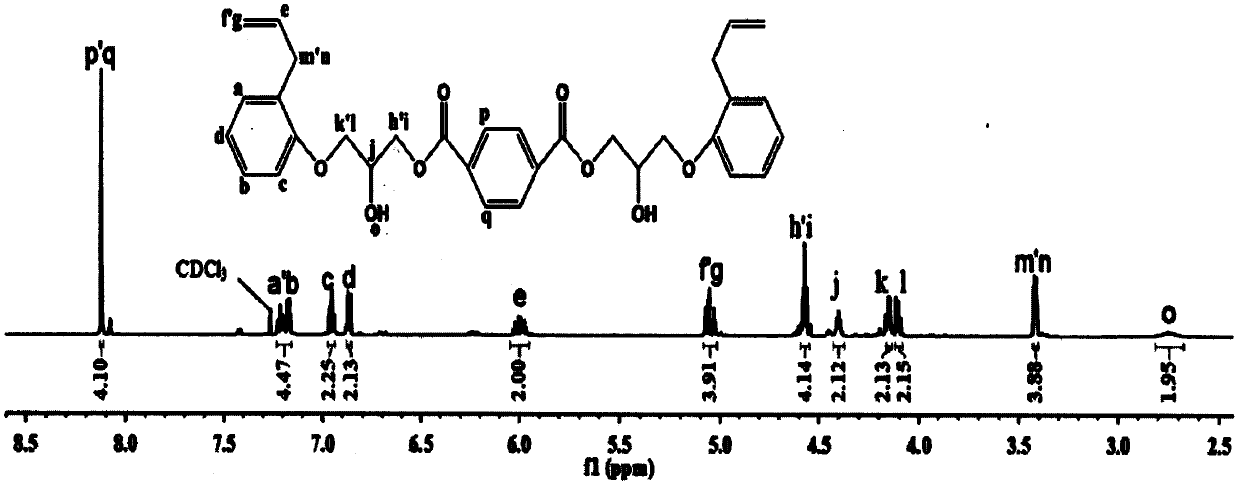Electronic material and use thereof
A technology of electronics and reinforced materials, applied in electronic materials and its application fields, can solve the problems of waste of resources, environment, pollution, copper clad laminates cannot be cured again, and achieve good shape memory performance, low energy consumption, and good remodeling performance Effect
- Summary
- Abstract
- Description
- Claims
- Application Information
AI Technical Summary
Problems solved by technology
Method used
Image
Examples
preparation example Construction
[0025] The preparation method of electronic material of the present invention is as follows:
[0026] (1) In the presence of quaternary ammonium salts, react 2-allylphenyl glycidyl ether with terephthalic acid to prepare bis(3-(2-allylphenoxy)-2-hydroxypropyl) terephthalates;
[0027] (2) Mesopores coated with bis(3-(2-allylphenoxy)-2-hydroxypropyl)terephthalate, bismaleimide, zinc compound, and polyphenylene ether Silica and solvent are stirred and mixed to obtain electronic material glue;
[0028] (3) impregnating the reinforcing material with the electronic material glue to obtain a prepreg; heating the prepreg to obtain the electronic material.
Synthetic example
[0030] On a mass basis, mix 120g of 2-allylphenol, 140g of sodium hydroxide, 10g of tetrabutylammonium bromide and 230g of tetrahydrofuran, and insulate and react at 35°C for 1.5h under stirring conditions to obtain solution A; Slowly add 270 g of epichlorohydrin dropwise, and keep stirring at 35° C. for 6 hours to react; after the reaction, vacuum rotary evaporation removes tetrahydrofuran and epichlorohydrin to obtain a crude product. The crude product was washed successively with saturated ammonium chloride solution (200mL×2), deionized water (200mL×2), and finally separated and purified by chromatography column to obtain a yellow transparent liquid, namely 2-allylphenyl glycidyl ether , the yield is about 93%, and its reaction formula and 1 H-NMR see attached figure 1 and 2 . On a mass basis, mix 120g 2-allylphenyl glycidyl ether, 45g terephthalic acid, 10g tetrabutylammonium bromide and 230g acetonitrile, and keep it under stirring for 8 hours at 70°C; after the reacti...
Embodiment 1
[0032] Example 1 Preparation of electronic materials
[0033] 50g N, N'-4,4'-diphenylmethane bismaleimide, 76.17g bis(3-(2-allylphenoxy)-2-hydroxypropyl)terephthalate Mix it with 6.29g (22.3mmol) zinc acetylacetonate hydrate and 1.5g polyphenylene ether-coated mesoporous silica, stir and prepolymerize at 130°C for 60min to obtain a prepolymer, and take a sample for DSC (10°C / min , the maximum reaction exothermic peak is 242.8°C); after the above prepolymer is cooled to room temperature, it is added to a mixture of N,N-dimethylformamide and butanone with a mass ratio of 2:8, and stirred at room temperature for 2 hours to obtain Electronic material glue, the solid content of the electronic material glue is 60%.
[0034] Use 1080 fiberglass cloth (Shanghai Honghe) to impregnate the above resin solution to obtain a prepreg, and then dry (160°C, 40 seconds) to remove the solvent to obtain a prepreg, that is, an electronic material.
[0035] Lay 8 above-mentioned prepregs, laminat...
PUM
 Login to View More
Login to View More Abstract
Description
Claims
Application Information
 Login to View More
Login to View More - R&D
- Intellectual Property
- Life Sciences
- Materials
- Tech Scout
- Unparalleled Data Quality
- Higher Quality Content
- 60% Fewer Hallucinations
Browse by: Latest US Patents, China's latest patents, Technical Efficacy Thesaurus, Application Domain, Technology Topic, Popular Technical Reports.
© 2025 PatSnap. All rights reserved.Legal|Privacy policy|Modern Slavery Act Transparency Statement|Sitemap|About US| Contact US: help@patsnap.com



